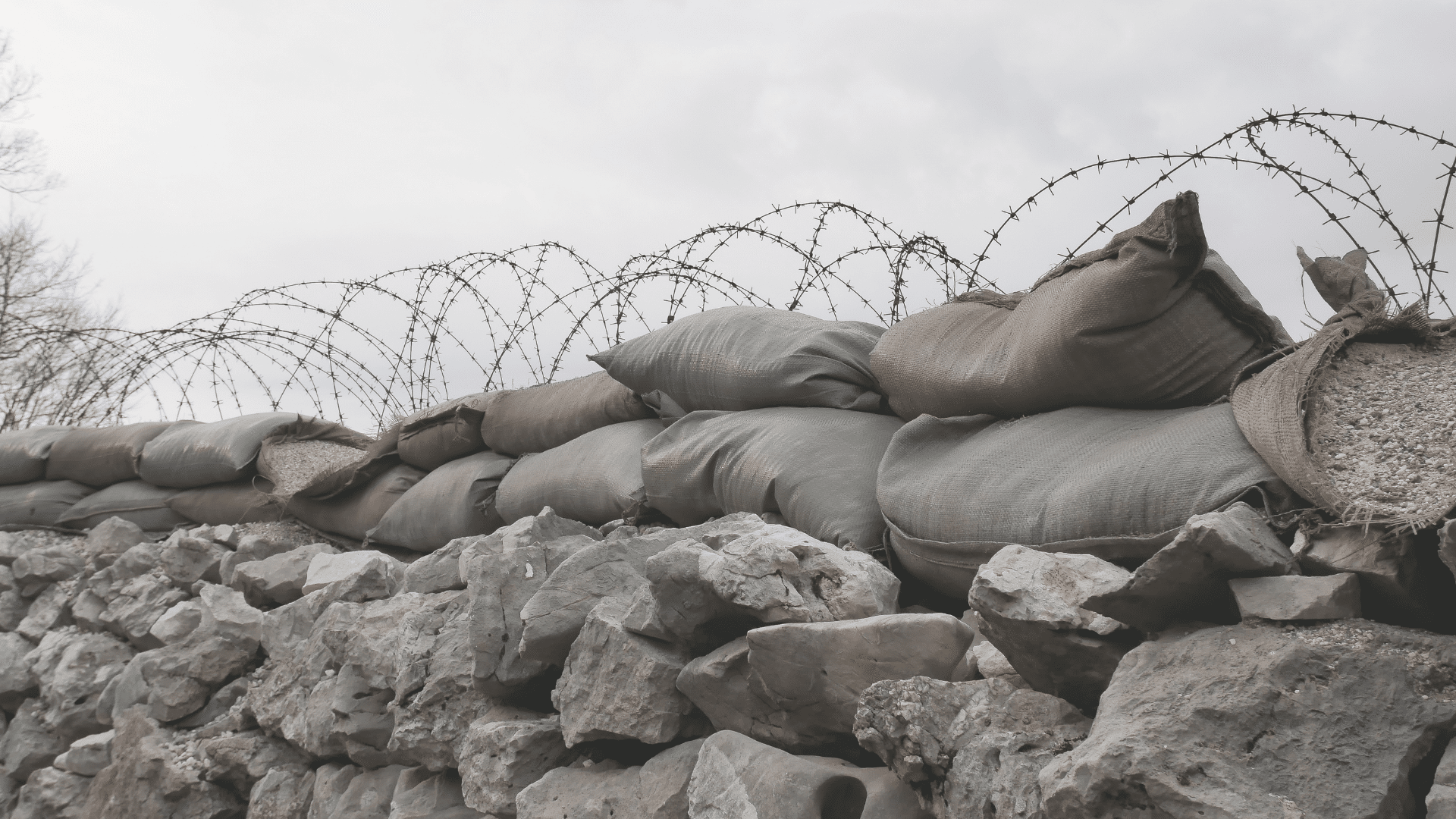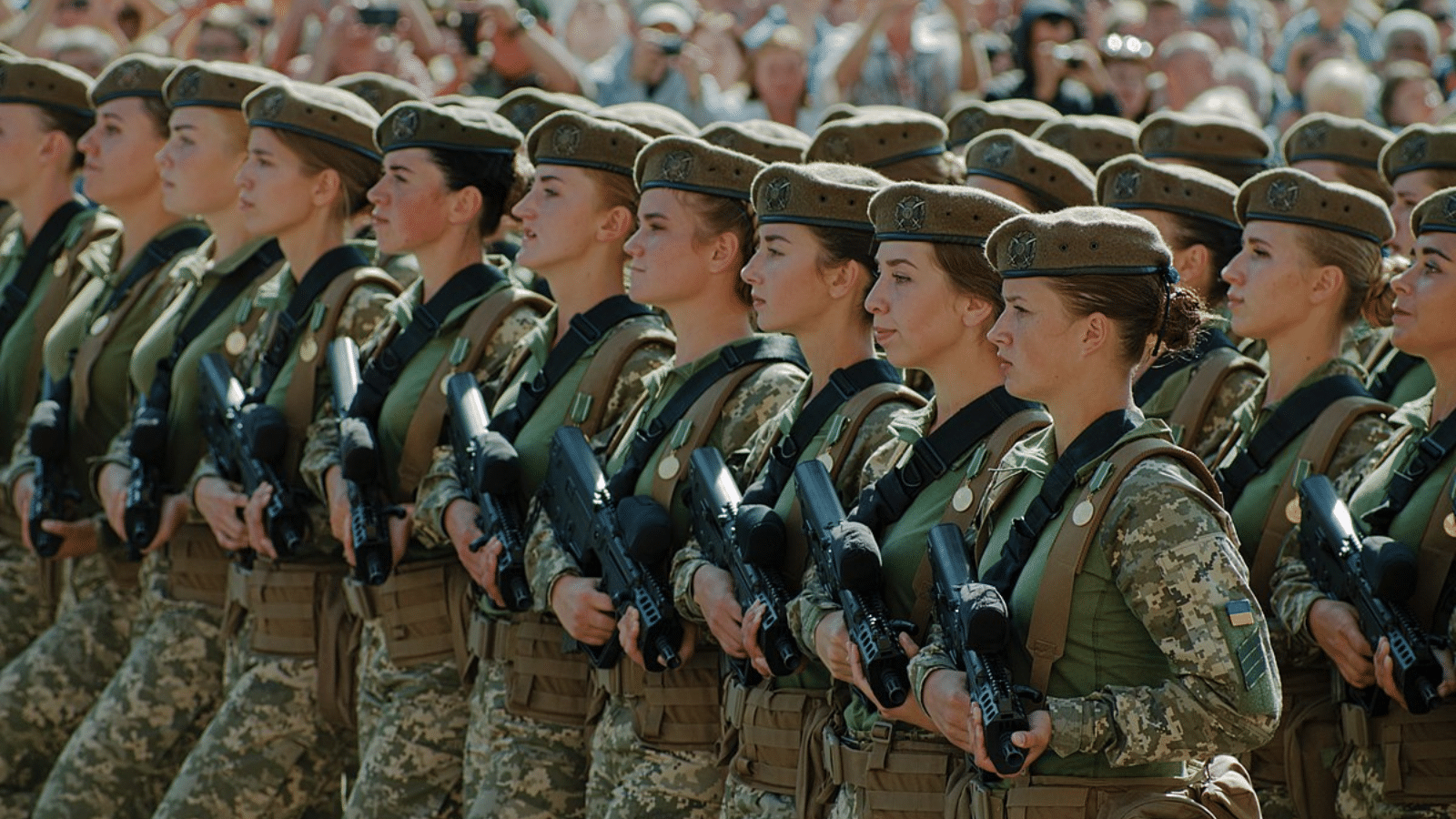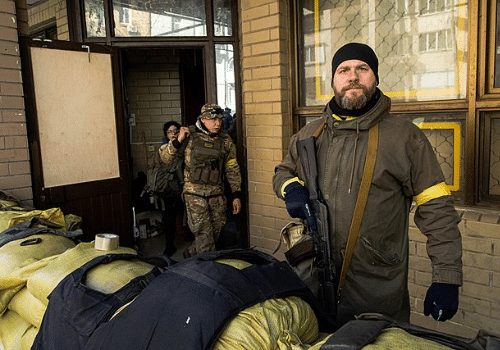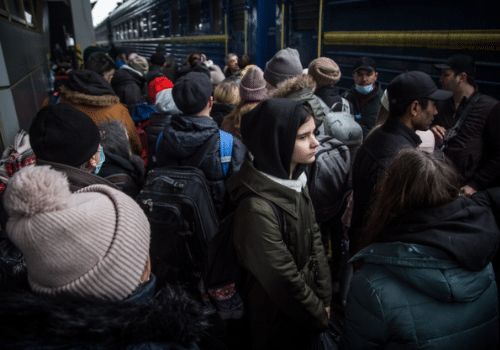With the world’s eyes focused on Putin’s war on Ukraine and its consequences, uncomfortable elements of the intersection of racial discrimination and conflict have been revealed. From a similar intersectional stance, this war – as any other – is also profoundly gendered. What type of gendered interplay are we witnessing in this context? This blog discusses what we are seeing unfold as the war continues.
In a world of hurt with several ongoing conflicts, Putin’s aggression in Ukraine has already raised several painful conversations. The magnified focus on the situation in Ukraine has been compared to other conflicts, and racial suffering in Europe has become more evident. When people have tried to escape the hostilities the racial discrimination and unjust treatment at the Ukrainian borders has been staggering, and it has also exposed racial and citizenship narratives in how refugees are treated in Europe.
However, racial discrimination is not the only social attribute that cuts across. This conflict, as any other, is thoroughly gendered. Traditional binary approaches prevail, in which the most common, gendered media imagery depicts male soldiers and fleeing women and children. However, Ukrainian women are at the frontlines of this war, and it should be no surprise that they are there.
This conflict, as any other, is thoroughly gendered.
A divided agency – gendered roles of war and peace
There are a vast number of stories speaking of the resilience and bravery of Ukrainian women in the face of a formidable opponent. However, many of these stories treat Ukrainian women with a sense of awe and surprise. Headlines sensationalise and highlight the determination of Ukrainian women: “Ukrainian woman, 79, takes part in military training in case Russia invades Ukraine;” “Former Miss Ukraine Anastasiia Lenna picks up a gun and vows to defend her country: ‘The invaders will die on our land!’.”
The sensationalisation of women’s agency in conflict and war follows a historical trend in which women who are in active conflict are treated as an anomaly, an exception. Depicted in relation to their binary opposite, men’s active participation in armed conflict is often seen as par for the course, or as them enacting their duty to their country. Not only does this type of segregation reveal historical gendered patterns on who are considered primary citizens and owners of a state, it also does huge disservice to women’s historical mobilisation and involvement in conflict and war. Conversely, it emphasises men’s involvement in conflict only as inherently militarised.
women who are in active conflict are treated as an anomaly, an exception
In a similar dichotomy in which men represent war, women continue to be framed in terms of peace. A way that this non-violent agency is portrayed can be seen in several of the images of war circulating in western media and social media that lean towards emphasising the vulnerability of women. We see women on stretchers, women huddling in bomb shelters, and women at the border with their vulnerable children. These images have also been used by the Ukrainian leadership to emphasise that the Russian army are targeting their vulnerable civilian, non-violent stakeholders of the conflict. This can be seen as a rhetoric device which is intended to generate international action through feelings such as sympathy and injustice.
Gender and Ukrainian military service
Women have been eligible for military service in Ukraine since 1993, and women are also required for military conscription. In December 2021, the Ukrainian government released a memo expanding the pool of those who were required to sign up. A member of Ukraine’s national parliament, Oleksandra Ustinova, emphasised that this was not a blanket, age-based conscription, but instead related to conscription of women in certain professions during wartime. Indeed, figures from the Ukrainian government indicate that – as of the start of 2021 – women comprised 22.8% of armed forces personnel. To put this into some perspective, the percentage of female personnel in the British army stands at 11%, and in the Polish army 8.3%. There has also been an up-tick in women volunteering to serve with the armed forces in confronting the threat from Russia. These have included both non-militarised and militarised forms: As an example of the latter, Ukrainian Parliamentarian, Kira Rudik, has been actively tweeting her experiences of picking up and firing weapons for the first time.
However, the soldiering in the Ukrainian context has been largely generated through gender. In late February, Ukraine brought in martial law, under which men aged 18–60 cannot leave the country. The aim is to ensure swift military mobilisation. This is concerning for a number of reasons, not least because the so-called “battle-aged men” are now vulnerable and effectively trapped in the country, potentially in violation of their human rights. This law, and more broadly, the social categorisation of what is considered male, does not sufficiently account for differences in vulnerability. While there are some exceptions – male nationals can cross the border if they are financially supporting 3 or more children under 18, are single fathers of children under 18, or are parent or guardian of children with disabilities – the law does not account for potential vulnerabilities related to sexual, gender, national, religious, or ethnic identities. Especially vulnerable are transgender people whose gender does not match that on their passport, and therefore have little chance of passing safely through the controls at the Ukrainian border.
the soldiering in the Ukrainian context has been largely generated through gender
Where is the women, peace and security agenda?
In terms of civil and non-military responses to the war, there has been little discussion of gender. The focus so far appears to be on further militarisation and assistance to Ukraine and at its border. There has been no clear rhetoric surrounding those still in Ukraine, their vulnerabilities, and how to protect all genders from further harm. There are alarming allegations of sexual and gender-based violence emerging from Ukraine and without a proper response to this, there is a risk that sexual violence becomes widespread – a weapon of war used in several other armed conflicts.
These themes and conversations are classic areas of what is considered to be the women, peace and security agenda. Embodied in the normative framework of 10 UN Security Council Resolutions, the agenda has, for over two decades now, steered women’s full participation as peace and security actors. However, when looking into the imagery of diplomatic and non-violent attempts of conflict resolution, the table from both sides, of Russian and Ukrainian representatives, embodies a lacuna of women. In a world in which 13% of peace negotiators and 6% of mediators have represented women in recent history, this is saddening but hardly surprising.
Also, little is discussed about women as current non-military and civilian security providers. These include the very act of fleeing, which represents a security measure of risk mitigation by physically removing oneself and others, such as children and elderly, away from high-risk scenarios. Through the domination of the narratives of vulnerability, neediness, and fragility in these contexts we lose a significant part of understanding women’s peace and security agency, and the appreciation of these security measures that are taken at the cost of abandoning life once known. This gendered conversation also has an intrinsic potential in shaping how we collectively view refugees: That is, to fundamentally question the perceived passive embodiments of “problematic” citizenships, and fleeing and receiving scenarios.
Instead of being treated as an afterthought, gender should be at the forefront of foreign policy and humanitarian interventions. Further nuancing the gendered dimensions underpinning this war would allow for a greater acknowledgement of the myriad roles that people of all genders play within conflict situations. Whereas the current media landscape from Ukraine includes (sensationalised) stories of women soldiering, there remains a gap in our understanding of gendered agency and its transformative potential. In turn, this can help us to understand not only this war, but other global conflicts and humanitarian crises.









